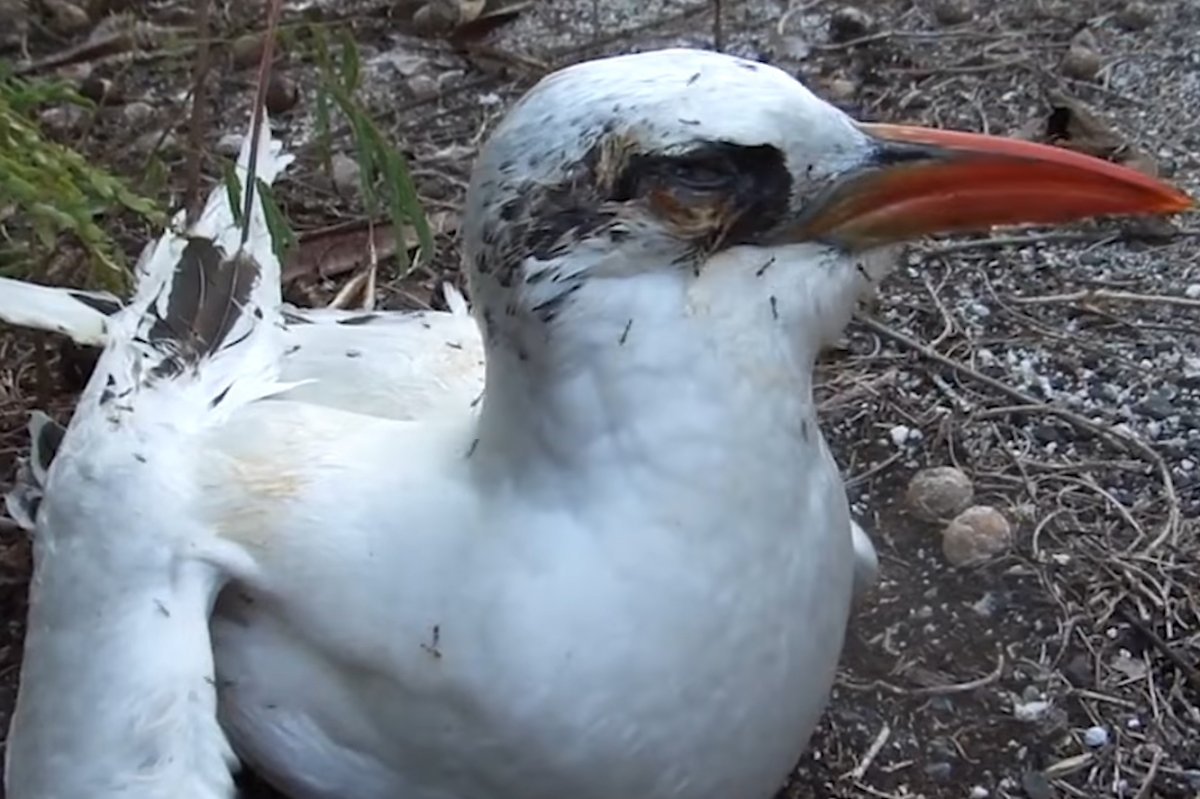U.S. officials say they’ve successfully eradicated an acid-spitting, bird-eating invasive species known as the yellow crazy ant, ending the insect’s decade-long reign over a wildlife refuge on the Pacific Ocean.

The ants hail from Southeast Asia but they became a devastating plague on the U.S.-controlled Johnston Atoll, where they would sneak up on nesting seabirds, blind them with acid and then devour them in swarms. The atoll is the only patch of dry land within a 1.5 million square kilometre stretch of ocean, making it a crucial landing spot for tens of thousands of birds from 15 different species.
So-called Crazy Ant Strike Teams worked hard to systematically bait and kill every one of the insects on Johnston Atoll, the U.S. Fish and Wildlife Service said Wednesday. The teams destroyed the ant nests and then used sniffer dogs to ensure that there were no survivors.
“This is the first time an invasive species has been eradicated on such a vast land in the United States,” said Kate Toniolo, director of the U.S. Pacific Islands Marine National Monument, in a statement. “The team has been monitoring, searching and investigating yellow crazy ants to ensure successful eradication.”
The translucent-yellow ants get their name from the fast, erratic way in which they move, though they’re also known to spread like crazy within the isolated ecosystems of various Pacific islands.
On Christmas Island, for example, the ants have become a major threat to the local population of red crabs, which have no defence against the insects’ blinding acid spray.
The insects are a “widespread and extremely harmful invasive ant,” said Sheldon Plentovich, U.S. Fish and Wildlife Service’s Pacific Islands coastal program coordinator.
“They have spread throughout all the main Hawaiian Islands and cause significant ecological harm to plants and animals, like the endangered Hawaiian yellow-faced bee and nesting birds,” she told the Associated Press.
She added that the ants are “very good hitchhikers,” which explains why they’ve managed to spread to so many islands, including Johnston Atoll. The atoll is a 28-hectare refuge on the Pacific Ocean, and is considered to be one of the most isolated places on Earth.
“While the mission of the Crazy Ant Strike Team is complete, the (U.S. Fish and Wildlife) Service will continue to focus on habitat restoration, preventing the spread of other invasive species,” said Stefan Kropidlowski, deputy superintendent for the Pacific Remote Islands Marine National Monument.
“For now, we celebrate that the refuge is once again a safe haven for the amazing seabirds that call this incredible place home.”
— With files from The Associated Press





Comments